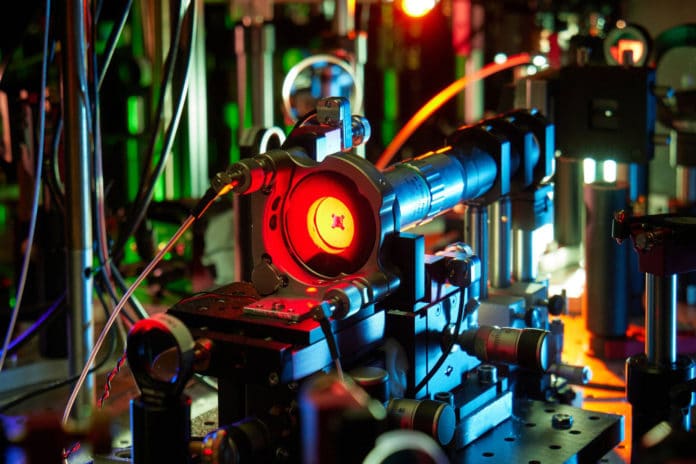Unlike liquids, gases are fairly easy to compress. It consists of atoms or molecules that swirl more or less quickly through space.
Gases are similar to light, with photons as small building blocks. These photons behave like particles that can be treated as gas. However, scientists at the University of Bonn create one that behaves somewhat unusually.
Scientists have created a gas of light particles that can be highly compressed. The study results confirm the predictions of central theories of quantum physics. The findings could also point to new types of sensors that can measure minute forces.
Scientists stored light particles in a tiny box made of mirrors to do this. Putting more photons lead to more dense gas.
A simple rule: The denser a gas, the harder it is to compress. The same case also applies to the plugged air pump—at first, the piston can be pushed down very easily, but at some point, it can hardly be moved any further, even when applying a lot of force. Scientists’ experiments at the initial stage were similar.
However, this behavior changed at one point: Once photon gas surpassed a particular density, it could suddenly be compressed without resistance.
Dr. Julian Schmitt of the IAP said, “This effect results from the rules of quantum mechanics. Matter and Light for Quantum Computing” and project leader in the Transregio Collaborative Research Center 185. The reason: The light particles exhibit a “fuzziness”—their location is somewhat blurred in simple terms. As they come very close to each other at high densities, the photons begin to overlap. Physicists then also speak of a “quantum degeneracy” of the gas. And it becomes much easier to compress such a degenerate quantum gas.”
The strong overlap causes light particles to form a Bose-Einstein condensate. This condensate is formed only when the “Islands of order” are formed just before the formation and grows larger. This requires a huge quantity of photons in an extended box.
Schmitt said, “We demonstrated this relationship in our experiments.”
Scientists used a heat bath to create a gas with variable particle numbers and well-defined temperatures.
Schmitt said, “We insert molecules into the mirror box that can absorb the photon. Subsequently, they emit new photons that on average possess the temperature of the molecules—in our case, just under 300 Kelvin, which is about room temperature.”
Erik Busley, first author of the publication, said, “We capture the photons in a flat-bottom mirror box that we created using a microstructuring method. This enabled us to create a homogeneous quantum gas of photons for the first time.”
Journal Reference:
- Erik Bisley et al., Compressibility and the equation of state of an optical quantum gas in a box, Science (2022). DOI: 10.1126/science.abm2543
